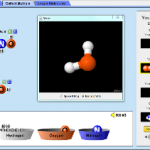OUR STUDENTS do not see the lesson the same way we, teachers, see it. We could not simply generalize that if we understand our lesson, the students can also get a good grasp of it by simply telling them. As experts would say, show, not tell, emphasizing the importance of presenting the lesson in a manner that utilizes their senses (visual, sound, kinesthetic, etc.).
According to the Sensory Stimulation Theory, there is greater learning if the different senses are stimulated at the same time. That is why we always have to use visual aids during lectures, make students simulate real-life physical phenomena in the laboratory, and explore a host of other teaching strategies that allow the students make use of their senses.
Three years ago, as I was looking for ways to present my lessons to my students, I came across PhET (Physics Education Technology) Project under the University of Colorado.
The PhET website has a collection of Java and Flash simulations in Physics, Chemistry, Biology, Earth and Environmental Science, and Mathematics that teachers could use in the classroom.
For three years, I have been using PhET in select topics in my Basic and Advanced Physics classes.
In the microteaching competition I participated in last February, I used PhET’s Circuit Construction Virtual Lab using the the Activity Guide I designed for the class.
What I have done in the past two years is that I exposed my students to circuit construction using the computer simulation before they proceeded to the lab to experiment with real electricity.
In this manner, they were already comfortable with making the connections before constructing real circuits in the lab. The experience of using the simulation is similar to the actual circuit construction minus the risk of getting electric shock and burns.
Of course, they had to do actual circuit construction because nothing will ever replace the experience of building the actual circuits themselves.
Aside from simulations, there are also user-generated or teacher-submitted activity sheets on the PhET website. I hope to submit my own laboratory activity sheets on the site, too.
For me, the key to effective use of the simulation is asking the right guide questions. I try the simulations myself and frame questions that will reveal the scientific principles explaining what could be observed in the simulation.
Visit the PhET now and explore the simulations you can use in your classroom teaching!









One thought on “PhET: A Vast Resource for Science and Mathematics Teachers”